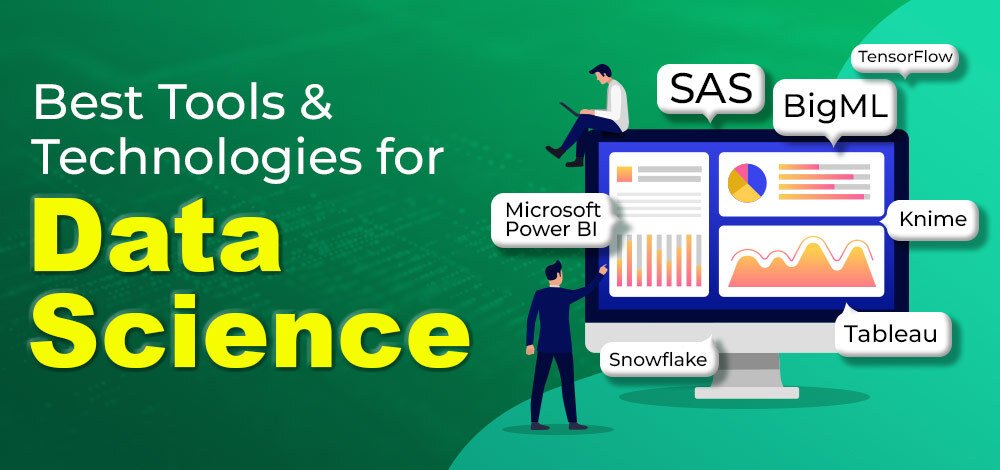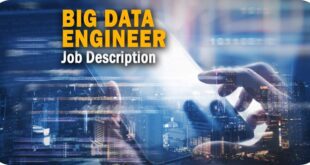Best Tools for Data Science
Tools for data science are instruments, software, or platforms used by data scientists to perform various tasks involved in the data science workflow, including data collection, cleaning, analysis, modeling, visualization, and deployment. These tools are designed to handle large volumes of data efficiently and enable data scientists to derive insights and make data-driven decisions.
Some popular data science tools include Python, R, SQL, Tableau, and Hadoop. Each tool has its strengths and capabilities, allowing data scientists to choose the best tool for the specific task at hand. With advancements in technology, new data science tools are constantly being developed to meet the evolving needs of data scientists in an ever-changing data landscape.
Here’s a comprehensive list of data science tools across different categories:

Data Collection and Cleaning:
The Best Tools for Data Science in Data Collection and Cleaning:
1. Apache Nifi: An open-source data ingestion and distribution system for automating the flow of data between systems.
2. Apache Kafka: A distributed event streaming platform used for building real-time data pipelines and streaming applications.
3. Apache Flume: A distributed log collection and aggregation system for efficiently collecting, aggregating, and moving large amounts of log data.
4. Apache Airflow: A platform to programmatically author, schedule, and monitor workflows, allowing for complex data pipelines.
5. Pandas: A Python library for data manipulation and analysis, providing data structures and functions for cleaning, transforming, and analyzing data.
6. OpenRefine: A tool for cleaning and transforming messy data, allowing users to explore, clean, and reconcile inconsistencies in data.
7. Trifacta Wrangler: An interactive data preparation tool that accelerates the process of cleaning and transforming data through a user-friendly interface.
Data Analysis and Exploration:
1. R is a programming language and environment for statistical computing and graphics, offering a wide range of packages for data analysis and visualization.
2. Python: A versatile programming language with libraries like NumPy, SciPy, and Matplotlib for numerical computing, scientific computing, and data visualization.
3. Jupyter Notebook/JupyterLab: An open-source web application for creating and sharing documents containing live code, equations, visualizations, and narrative text.
4. Tableau: A powerful data visualization tool that allows users to create interactive dashboards and reports for exploring and communicating insights from data.
5. Google Data Studio: A free tool for creating interactive dashboards and reports using data from various sources, such as Google Analytics, Google Sheets, and BigQuery.
Machine learning and modeling:
1. Scikit-Learn: A machine learning library in Python that provides simple and efficient tools for data mining and data analysis, including supervised and unsupervised learning algorithms.
2. TensorFlow: an open-source machine learning framework that Google created for creating and training deep learning models, including neural networks and deep learning algorithms.
3. PyTorch: A deep learning framework developed by Facebook’s AI Research Lab that provides tensors and dynamic computational graphs for building and training deep learning models.
4. XGBoost: An optimized distributed gradient boosting library that provides scalable, portable, and accurate implementations of gradient boosting algorithms.
5. H2O.ai: An open-source platform for building and deploying machine learning models at scale, offering algorithms for classification, regression, clustering, and anomaly detection.
Big Data and Distributed Computing:
1. Apache Spark is a unified analytics engine for large-scale data processing and machine learning, providing APIs for batch processing, stream processing, SQL, and machine learning.
2. Hadoop: An open-source framework for distributed storage and processing of large datasets across clusters of computers using simple programming models.
3. Databricks: A cloud-based platform built on top of Apache Spark for data engineering, data science, and machine learning, providing collaborative notebooks, jobs, and automated workflows.
Data Visualization and Reporting:
1. Plotly: A Python graphing library for creating interactive, publication-quality graphs and dashboards.
2. Seaborn: A Python visualization library based on Matplotlib for statistical data visualization, providing high-level interfaces for drawing informative and attractive statistical graphics.
3. Altair: A declarative statistical visualization library for Python that generates interactive visualizations from declarative specifications.
4. Microsoft Power BI: A business analytics service that provides interactive visualizations and business intelligence capabilities for creating dashboards and reports.
5. QlikView and Qlik Sense: business intelligence platforms for creating interactive dashboards and reports from various data sources.
Data Warehousing and SQL:
1. Snowflake: A cloud-based data warehousing platform that enables users to store and analyze large volumes of structured and semi-structured data.
2. Google BigQuery: A fully managed data warehouse for running fast SQL queries on large datasets, offering real-time analytics and machine learning capabilities.
3. Amazon Redshift: A fully managed data warehouse service that enables users to analyze data using standard SQL queries.
Others:
1. Apache Zeppelin: A web-based notebook for data analytics and visualization, supporting multiple programming languages like Scala, Python, SQL, and Markdown.
2. KNIME: An open-source platform for data analytics, reporting, and integration, providing visual workflows for data preprocessing, analysis, and visualization.
3. RapidMiner: An open-source platform for data science and machine learning, offering a visual workflow designer and tools for data preprocessing, modeling, and evaluation.
These are just some of the many data science tools available, each catering to different aspects of the data science workflow and offering unique features and capabilities. Data scientists often leverage a combination of these tools based on their specific requirements, preferences, and expertise to effectively analyze data and derive valuable insights.
 Data Science in Digital Marketing Data Science in Digital Marketing: Mechanism Examples, Benefits Data Science Meets Digital Marketing Magic
Data Science in Digital Marketing Data Science in Digital Marketing: Mechanism Examples, Benefits Data Science Meets Digital Marketing Magic



